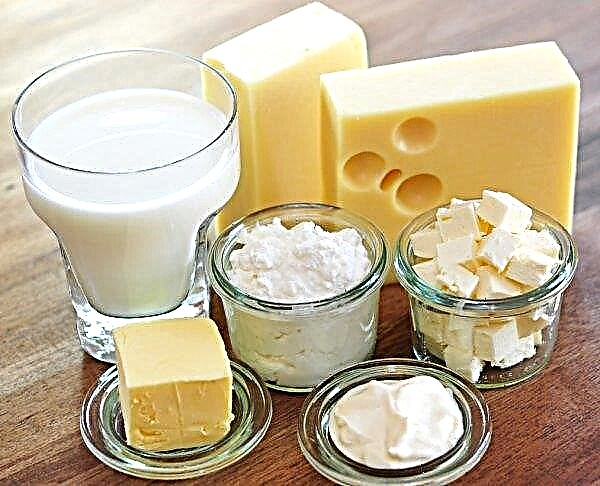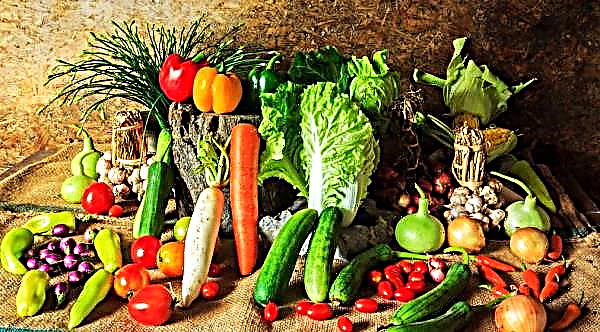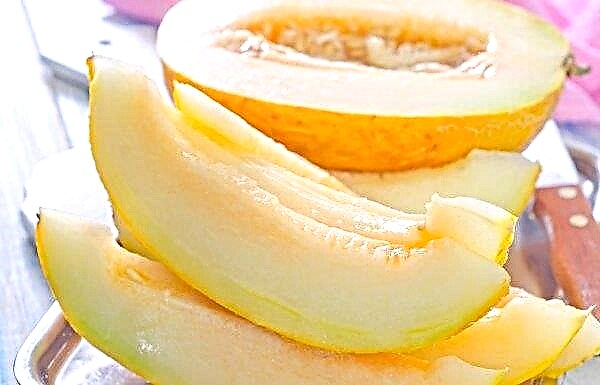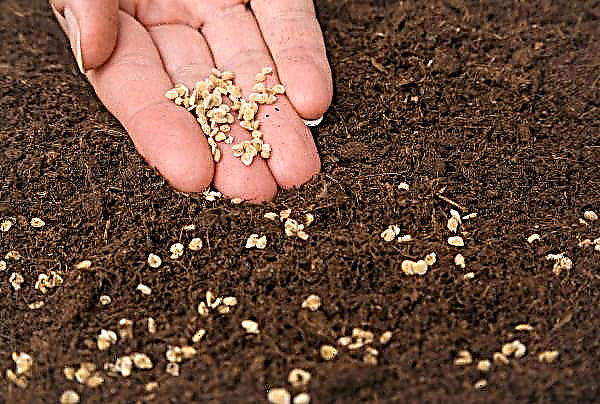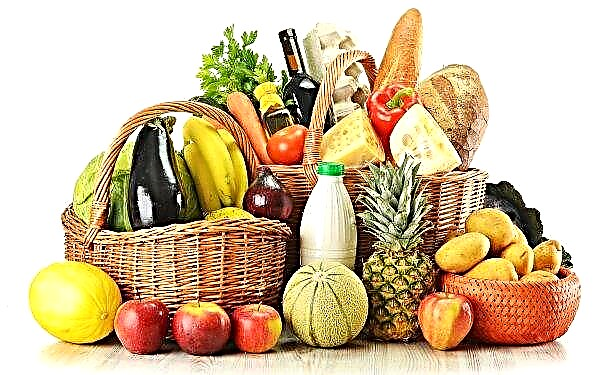Many are accustomed to consume watermelon in unlimited quantities, suggesting that it does not harm. Yes, the main component of the fetus is water, which after some time will come out of the body, having washed out harmful substances from it. In addition, its calorie content is low, which does not give reason to worry about extra centimeters at the waist. But do not forget that since watermelon pulp is sweet, it contains sugar. In this regard, it is necessary to regulate the norms of the fetus. We will talk about them and the sugar content in watermelon below.
Did you know? The Vietnamese have a watermelon - the main decoration of the New Year's table. An omen is even connected with the berry: you will meet the New Year with it - the whole year will be successful.
How much sugar does a watermelon contain?
Sugar comes in the form of glucose, fructose, or sucrose. The latter consists of the first two, in the form of α and β cycles, respectively. Fructose predominates in watermelon. In the pulp of the fruit, sugar can be on the order of 5 g or 10 g per 100 grams. The exact amount depends on what kind of berry. Glucose (desaccharose) in 100 grams contains 2.4 g, sucrose - 2 g, fructose - 4.3 g.
Calorie content of the product
Watermelon pulp contains the following vitamins (per 100 grams):
- ascorbic acid - 7 mg;
- tocopherol - 0.1 mg;
- retinol - 17 mcg;
- nicotinic acid - 0.3 mg;
- folic acid - 8 mcg;
- pyridoxine - 0.09 mg;
- riboflavin - 0.06 mg;
- thiamine - 0.04 mg;
- beta-carotene - 0.1 mg.
The percentage of fatty acids in the pulp: 10.41%, 3.35%, 86.25%, respectively. Energy value - 27 kcal, which is 1.9% of the norm as a percentage. The glycemic index is 65–70 units.
Important! The fetus is also harmful in case of problems with the gastrointestinal tract, especially in the acute phase, since the fiber contained in the pulp strongly irritates the mucous membrane.
Berry properties
In addition to vitamins, watermelon contains a number of other substances necessary for the body. They cause a beneficial and harmful effect.
Benefit
- The positive effect of berries on the human body:
- contained alkalis help to remove sand and stones from the kidneys;
- diuretic effect eliminates edema;
- cleanses the liver of toxins;
- magnesium supports the work of the heart and blood vessels;
- iron prevents the development of anemia;
- amino acids accelerate metabolic processes.
Possible harm and contraindications
The harm from consuming watermelon is primarily due to the fact that a person may have an individual intolerance to lycopene, which manifests itself in the form of allergic reactions. Citrulline can cause a similar reaction, although it is useful for our body, as it regulates blood sugar. Unfortunately, if this amino acid is produced in sufficient quantities in the body, then excessive consumption of pulp can cause the accumulation of extra pounds.
Important! Type 1 and type 2 diabetics need to remember that 260 g of pulp and peel corresponds to 1 bread unit. Therefore, no more than 300 g of pulp can be eaten per day.
Norms and rules of use
You can combine watermelon with any products and use it regardless of the meal, as well as the time of day. Of course, eating it at night is undesirable, as it is unlikely to be pleasant to constantly wake up due to the urge to the toilet. But they do not recommend consuming a lot. An adult can eat no more than 0.5 kg of pulp per day. It is better to eat in small portions, 0.2-0.3 kg. Children under 2 years old are undesirable to give birth.
Rules for the use of summer treats:
- Make sure that the product does not contain nitrates (soak the pulp in water, when the liquid is colored pink or red, the fruit is better not to eat - it contains nitrates).
- Refuse treats if there are contraindications.
- Wash the berry before cutting it.
- Always buy a whole fruit, cut quickly deteriorates and is populated by harmful microorganisms.
- Do not gnaw the pulp all the way to the peel, as a high concentration of nitrates is found there.
Can I eat watermelon with diabetes?
Even if you consume 200-300 g of berries at a time, blood sugar levels will rise. This phenomenon is undesirable in diabetes, so you need to be careful with the use of the fetus, as well as consider the carbohydrates received per day.
- But you don’t need to completely give up treats, as a watermelon for diabetics is very useful:
- normalizes the liver;
- supports and restores cells;
- nourishes the heart.
Other permitted berries for diabetes:
- Strawberry;
- cherry;
- cherries;
- raspberry;
- mulberry;
- gooseberry;
- currant;
- blueberries.
 Due to the fact that watermelon is able to increase blood sugar, it should be eaten with caution not only for patients with diabetes, but also for those who are struggling with excess weight. Healthy people also do not want to abuse the berry, because overeating can be an unpleasant feeling of heaviness in the stomach, nausea and frustration. It’s better to eat a little, but often.
Due to the fact that watermelon is able to increase blood sugar, it should be eaten with caution not only for patients with diabetes, but also for those who are struggling with excess weight. Healthy people also do not want to abuse the berry, because overeating can be an unpleasant feeling of heaviness in the stomach, nausea and frustration. It’s better to eat a little, but often.


